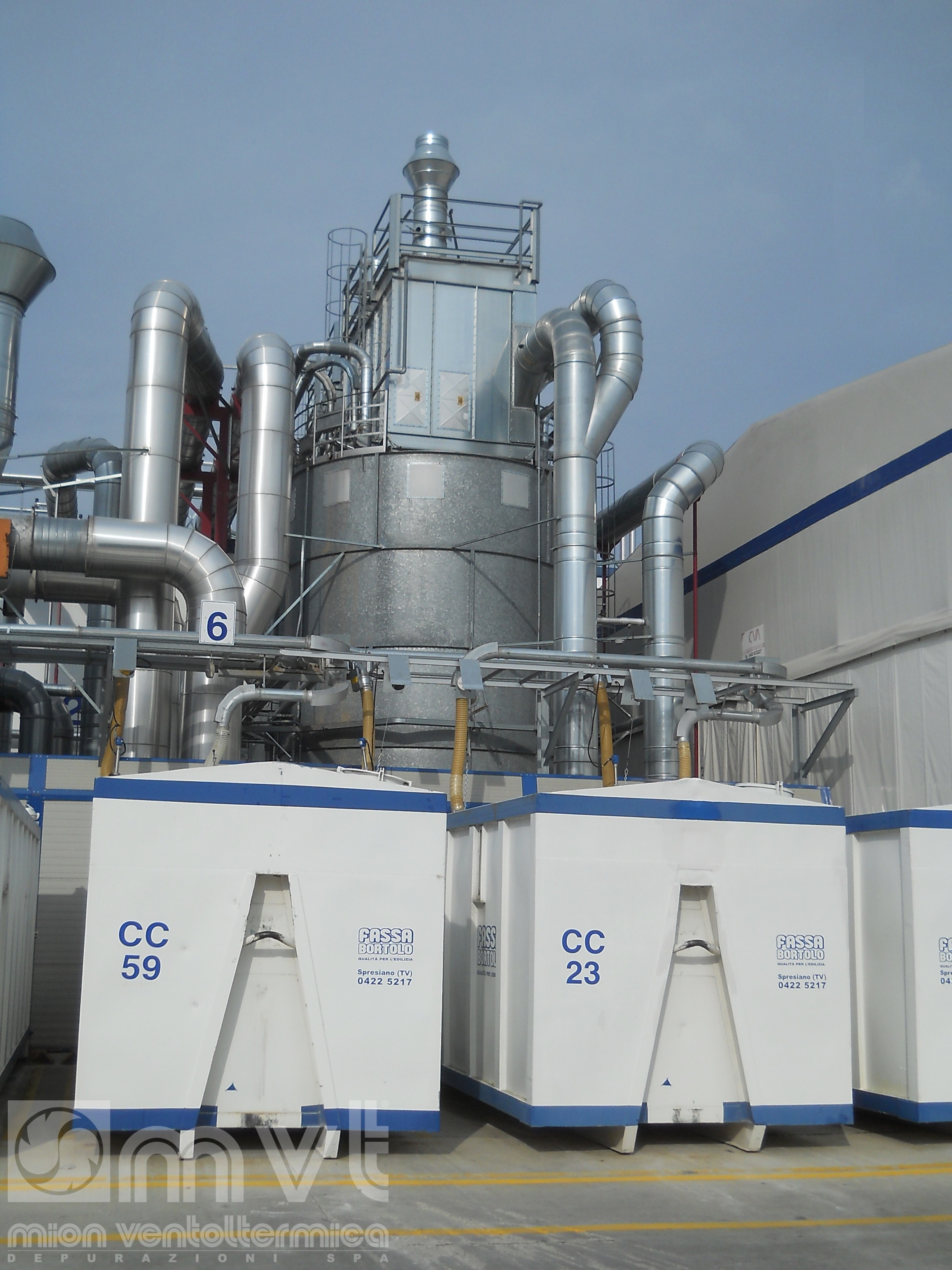Further details on this system
The pneumatic transport systems by Mion Ventoltermica allow you to quickly and efficiently transfer bulk materials for:
- operations to discharge waste material from a bag filter;
- loading containers;
- loading storage silos;
- mixing different materials contained in multiple silos;
- transporting over long distances (over 600 metres).
These systems are characterised by different elements, appropriately researched and put together, in relation to the application context and the type of material to be conveyed. Generally, they consist of a machine that creates the pressure or negative pressure needed for transportation (fan or positive displacement blower), a loading station (feeder and ejector, etc.), connection piping, an unloading station (cyclone, etc.) and/or a collection point (storage silos, containers, etc.), all of which is served by a dust collection filter.
For the design and construction of pneumatic transport systems, a number of parameters are taken into account including, the grain size and characteristics of the material to be conveyed, its abrasiveness, the distances to be covered and its specific gravity and volume.
The characteristics of materials that can be transported are:
- similar grain size and particle size with low variability;
- humidity below 20%;
- low or non-existent stickiness.
Our pneumatic transport systems can be adapted to any production facility and used in many industrial sectors such as:
- wood;
- ground materials;
- grains;
- paper/cardboard;
- textile;
- leathers;
- plastic;
- inert materials;
- metal edge shavings;
- municipal or similar waste or non-similar waste.
If there are potentially explosive materials, the machines are developed and produced in compliance with the Community Directive 2014/34/EU (ATEX Directive).
BENEFITS:
- transport in compartmentalized environment;
- dust containment in controlled and safe environment;
- easy installation of control and suppression systems for use in the event of an explosion and/or fire;
- reduced installation space;
- significant time saving in the transfer of materials from one process step to another;
- flexibility in routing (above ground and/or underground);
- loading and unloading of material at various points and levels;
- limited maintenance.







